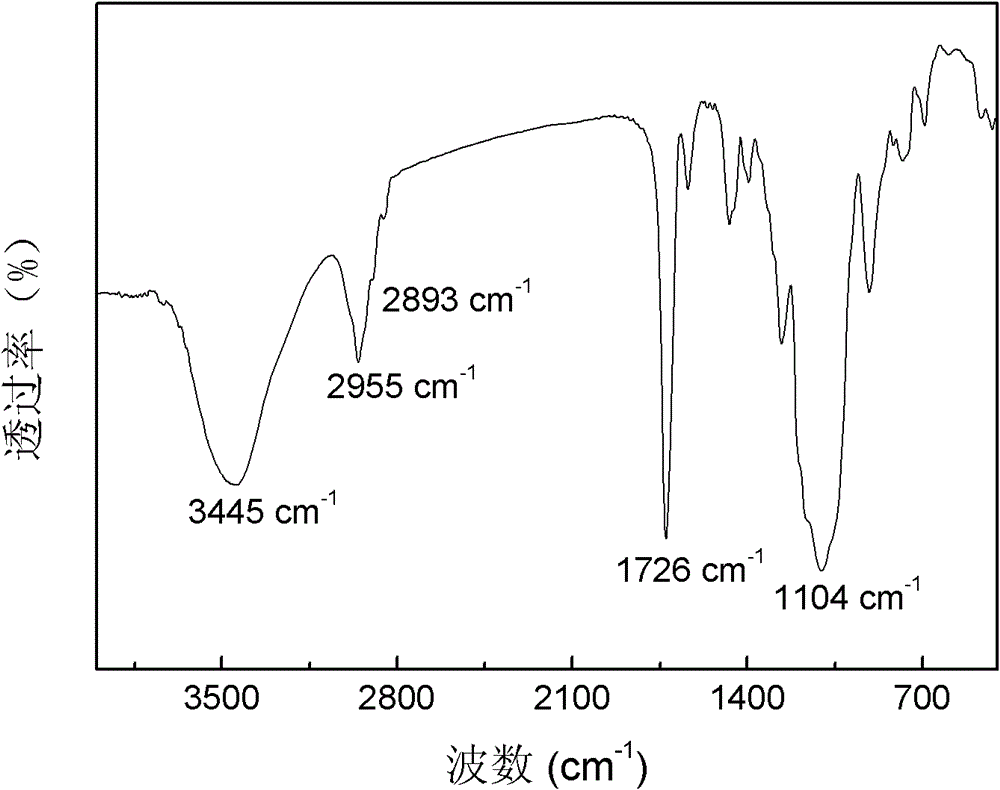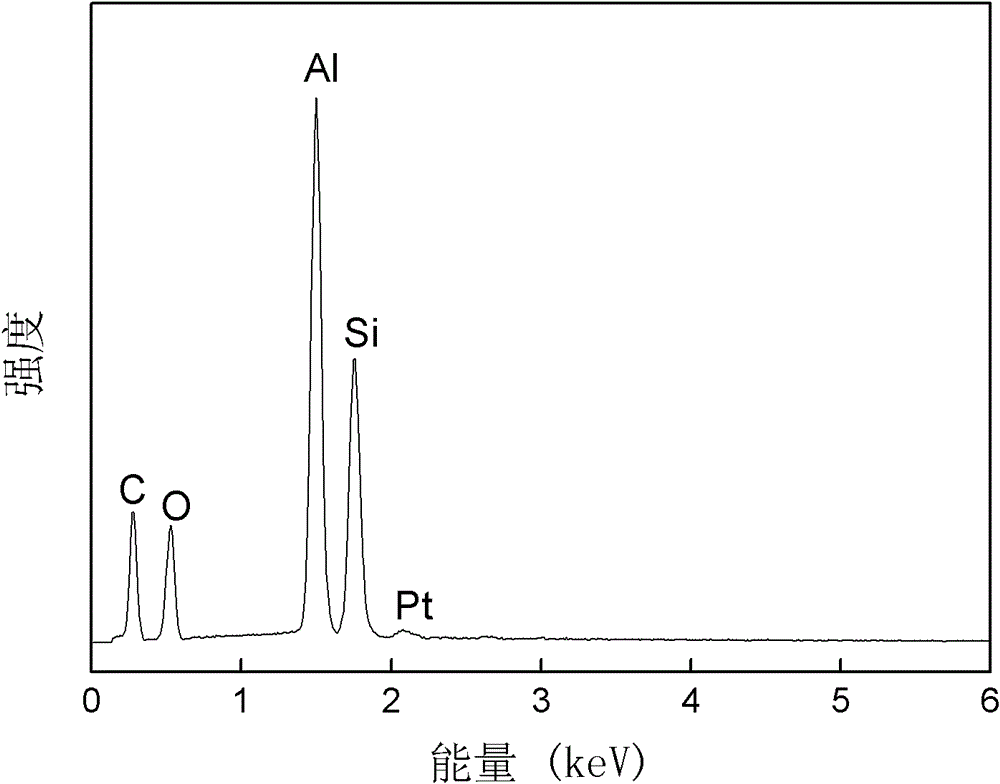Organic-inorganic hybridized mesoporous polymer material
A polymer material and inorganic technology, applied in the field of mesoporous polymer materials, can solve the problems of complex devices, limited application prospects, harsh reaction conditions, etc., and achieve the effects of avoiding high temperature and high pressure, wide sources, and mild synthesis conditions
- Summary
- Abstract
- Description
- Claims
- Application Information
AI Technical Summary
Problems solved by technology
Method used
Image
Examples
Embodiment 1
[0030] Weigh 25mg cetyltrimethylammonium bromide into a reaction flask containing 190mL deionized water, stir vigorously, keep the reaction flask in an ice bath at 0-5°C, and add it to the above reaction flask 10 mL of 0.5% potassium persulfate aqueous solution was added, and the solution turned milky white, indicating that the persulfate ion and cetyltrimethylammonium ion form a water-insoluble template. After keeping for 15 minutes, add 1.50 mL of 3-(methacryloxy)propyltrimethoxysilane to the above reaction flask under vigorous stirring in an ice bath at 0-5°C, and deoxidize with nitrogen for 10 minutes . Finally, in an ice bath at 0-5°C, add 55uL of tetramethylethylenediamine to the above reaction flask under vigorous stirring to form a reaction solution, where the tetramethylethylenediamine initiates radical polymerization and promotes the gradual decomposition of the template . The reaction solution was reacted for 24 hours in an ice bath at 0-5°C under a nitrogen atmosp...
Embodiment 2
[0034] Weigh 500mg cetyltrimethylammonium bromide into a reaction flask containing 190mL deionized water, stir vigorously, keep the reaction flask in an ice bath at 0-5°C, and add it to the above reaction flask Adding 10 mL of a potassium persulfate aqueous solution with a mass fraction of 10%, the solution turned milky white, indicating that the persulfate ion and cetyltrimethylammonium ion form a water-insoluble template. After keeping it for 15 minutes, add 10 mL of 3-(methacryloyloxy)propyltrimethoxysilane to the above reaction flask under vigorous stirring in an ice bath at 0-5°C, and deoxidize with nitrogen for 10 minutes. Finally, in an ice bath at 0-5°C, 1 mL of tetramethylethylenediamine was added to the above reaction flask under vigorous stirring to form a reaction solution, where the tetramethylethylenediamine initiates radical polymerization and promotes the gradual decomposition of the template. The reaction solution was reacted for 48 hours in an ice bath at 0-5°...
Embodiment 3
[0037] Weigh 300mg cetyltrimethylammonium bromide into a reaction flask containing 190mL deionized water, stir vigorously, keep the reaction flask in an ice bath at 0-5°C, add it to the above reaction flask Adding 10 mL of potassium persulfate aqueous solution with a mass fraction of 6%, the solution turned milky white, indicating that the persulfate ion and cetyltrimethylammonium ion form a water-insoluble template. After keeping it for 15 minutes, add 1 mL of 3-(methacryloyloxy)propyltrimethoxysilane to the above reaction flask under vigorous stirring in an ice bath at 0-5°C, and deoxidize with nitrogen for 10 minutes. Finally, in an ice bath at 0-5° C., 400 uL of tetramethylethylenediamine is added to the above reaction flask under vigorous stirring to form a reaction solution, wherein the tetramethylethylenediamine initiates radical polymerization and promotes the gradual decomposition of the template. The reaction solution was reacted for 12 hours in an ice bath at 0-5°C u...
PUM
| Property | Measurement | Unit |
|---|---|---|
| pore size | aaaaa | aaaaa |
| specific surface area | aaaaa | aaaaa |
| pore size | aaaaa | aaaaa |
Abstract
Description
Claims
Application Information
 Login to View More
Login to View More - R&D Engineer
- R&D Manager
- IP Professional
- Industry Leading Data Capabilities
- Powerful AI technology
- Patent DNA Extraction
Browse by: Latest US Patents, China's latest patents, Technical Efficacy Thesaurus, Application Domain, Technology Topic, Popular Technical Reports.
© 2024 PatSnap. All rights reserved.Legal|Privacy policy|Modern Slavery Act Transparency Statement|Sitemap|About US| Contact US: help@patsnap.com










